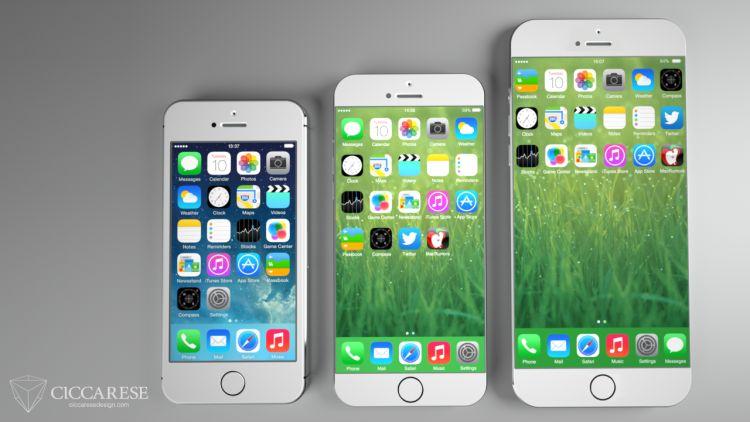
It was the phone that started it all, and probably the one phone that everybody recognizes whether you’re interested in the industry or not: the Apple iPhone. Even thought it was first introduced 7 years ago, the iPhone still manages to stand out today. That is to say, if you put an iPhone next to other flagship phones today, the first thing you’re likely to notice is that it is significantly smaller than most phones that are categorized on its same level. While many flagship phones are now shipping with at least 5-inch screens, the iPhone 5s still uses a 4-inch display - a size that was only introduced to the iPhone just a year and a half ago. Before that, the iPhone was notorious for hanging on to that 3.5-inch display.
Once upon a time, it was speculated that Apple would never get rid of the ideal that the 3.5-inch display was the “perfect” sized screen for a smartphone. Why? Simply put, one-handed use on a smaller screen makes sense. With these larger screens, if you need to navigate to a far away corner, you’re going to have to do a bit of stretching; however, it is doable. I just used my Moto X, with a case on, to reach my thumb across to the top corner of the screen. Although the phone is not completely in my grip, I can get there without using two hands. It’s not as secure as, say, an iPhone would have been nestled in the palm of my hand, that’s true; but then again, I can’t say that the need to reach the top corner of my screen happens often. It's also hard to deny how much nicer it is, at least in my opinion, watching movies, shows, and playing games on a larger screen than it is on a smaller one.
Obviously, Apple ditched that ideal when they moved to a 4-inch display. Just a mere 0.5-inches bigger, the iPhone 5 found itself being scrutinized (even by me) for only marginally being increased in size. At this point, phablets were really starting to draw attention, and the 5-inch Galaxy S4 was only months away from being released. To many, the iPhone 5’s display size increase was Apple’s way of saying “Okay, we did it! It’s the biggest iPhone yet!” Which was true, but the iPhone continued to be one of the smaller smartphones on the market. People had hoped for bigger, while others were content that Apple increased size but still kept things small.
If you give a mouse a cookie...
It didn’t come as much surprise that the iPhone 5s and the iPhone 5c carried the same 4-inch screen over with it. After all, the ‘s’ update is mostly done as a yearly refresh of internal components; when the generations switch numbers is when we are to see the hardware design change. With this year being the year we expect to see the iPhone 6, anticipation of an “iPhone with a larger screen” is already being discussed and rumored by hopefuls. In one recent article I came across, rumor has already sparked that Apple’s LCD screen suppliers are pumping out 4.7 and 5.5-inch screens, presumably because sales are so low compared to rivals like Samsung. Another article states that Donald Trump also suspects that the iPhone will be bigger than ever this year.
My question is, would a larger screen really increase interest and sales of the iPhone?
Perhaps, but I also think that Apple should keep its same 4-inch size. It’s not like Apple is doing terribly for itself, which means there are still a number of people out there who may actually like the smaller size of the device. Then again, it’s not like larger phones are exactly a niche thing anymore. In my opinion, Apple should go for both: release an iPhone that still uses a 4-inch screen, and release a larger iPhone that uses a 5-inch (or 5.5-inch) screen if they’re interested in adding a phablet to their lineup.
The reason I don’t think they should go for a 4.7-inch screen is because that’s still a considerably large phone, and a 5.5-inch screen really might be pushing it. By going with a 4-inch and 5-inch screen route, there’s enough to make the people who like small screen stay, and a reason for people who like larger screens to come back. With the HTC M8 having a 5-inch screen, and the Galaxy S5 having a 5.1-inch screen, a 5-inch iPhone would fit right in.
There are a few manufacturers out there that have chosen to release different “variations” of a certain device, like “Mini” versions or “Max” versions (sometimes both); perhaps this is a road that Apple might consider traveling down in order to boost interest and sales.
Readers, what do you think? Do you think Apple should just keep it simple and keep rolling with the 4-inch displays, or do you think they should start offering a second, larger iPhone alongside it? You know the drill, share your thoughts with us below!